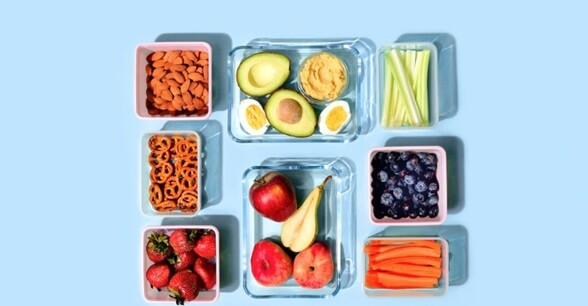Navigating TSA Food Rules: What You Need to Know About Bringing Food through Airport Security
Yes, You Can Carry Food Through TSA—With Some Exceptions Before attempting to bring that delicious souvenir or homemade meal through airport security, here's what you need to know.
Food is often my preferred gift when visiting friends, a beloved keepsake to bring back home, and a usually essential item on my packing checklist. Consequently, I've frequently stashed some sort of delectable treat in my carry-on, which can occasionally cause a brief delay at TSA checkpoints. Over the years, I've had yogurt confiscated, pâté discarded, and hot chocolate mix subjected to additional screening by TSA agents. However, I've also had numerous protein bars, chips, and sandwiches pass through without any issues.
So, indeed, you can transport food through TSA checkpoints, but there are essential exceptions and regulations to be aware of before heading to the airport with your in-flight snack carefully stored in your bag.
What food can you carry through TSA? Most foods can be brought through TSA, but your snacks, similar to your toiletries, must adhere to the 3-1-1 liquids rule. If they are considered a liquid, paste, or gel—a classification that isn't always clear—they must be under 3.4 ounces. This category encompasses liquids and items with a liquid consistency such as juice, yogurt, syrup, soup, jams, jellies, condiments, or anything packed in oil, as well as spreadable items like nut butters, pâté, creamy cheeses, frosting, hummus, and other dips. Thus, while a 5-ounce yogurt could pose an issue, a 1.2-ounce nut butter packet shouldn't be problematic.
Exceptions to the 3.4-ounce rule include:
Baby food and formula Breast milk and juice for infants or toddlers Frozen ice packs for preserving these foods' coolness Solid foods, such as pasta or sandwiches, are not subject to this rule, so you can confidently carry that entire San Francisco sourdough loaf onboard.
If you're uncertain about a specific food item, you can consult TSA's helpful "What Can I Bring?" tool or send a text message to the TSA with your question.
Alcohol above 140 proof If you're traveling with alcohol exceeding 140 proof (70 percent), it is prohibited to bring it through airport security in any quantity. To safeguard your souvenir rum from being confiscated, it's advisable to check it.
However, the majority of alcoholic beverages are not that strong and can be carried through TSA as long as the bottle size is less than 3.4 ounces.
Nevertheless, in accordance with FAA regulations, you are not allowed to consume alcohol onboard that is not served by a flight attendant. Therefore, if you're hiding a few mini liquor bottles in your carry-on, be cautious and keep them there for the duration of the flight, or you might face a fine.
Frozen foods In theory, you can bring liquid foods in their frozen state through airport security "as long as they are frozen solid when presented for screening."
Flights originating from outside the U.S. The 3-1-1 rule is not exclusive to the United States. Many other countries, including the United Kingdom, Canada, and Australia, also restrict liquids, pastes, and gels (whether food or not) to quantities less than 3.4 ounces in your carry-on. Before your flight, consult your airline's website for more detailed information on permissible items.
TSA-approved snacks and meals
If you wish to carry your own food from home for your flight, here are some of our preferred TSA-approved snacks and meals—bonus points if you include reusable utensils.
TSA-approved snack suggestions:
Sliced veggies with a container of hummus (under 3.4 ounces) Protein bars Dried fruits and nuts DIY charcuterie box (with hard, non-creamy cheeses) Muffins and pastries Beef or mushroom jerky Popcorn Chips Crackers Chocolate or cookies Explore more DIY snack ideas, including recipes.
TSA-approved meals to pack in your carry-on: Sandwiches and wraps Slice of quiche or frittata Pasta salad Instant oatmeal, along with a suitable vessel, such as the Miir Camp Cup, for consumption Grain or rice bowls Regardless of your choice, remember that being able to carry something through TSA doesn't necessarily mean you should. Try to avoid highly perishable foods and anything strongly aromatic (like tuna or bananas)—your fellow passengers will appreciate it.
How to pack your snacks for air travel To prevent the unpleasant discovery of a few squashed grapes in your bag during your flight, follow these tips for packing your snacks and food.
For snacks and sandwiches, I prefer using a reusable silicone bag like Stasher (starting from $13, stasher.com)—not only is it more eco-friendly than a disposable bag, but it's also convenient for the return flight.
For anything that could be considered a liquid, paste, or gel, I utilize Monbento's 2.4-ounce snack cups ($8, monbento.com) to ensure that I'm within the 3.4-ounce limit.
If I'm carrying more than a small snack, a lunch bag, like the stylish printed ones by Baggu, helps keep perishable items fresh while separating the food from the rest of my travel belongings.

